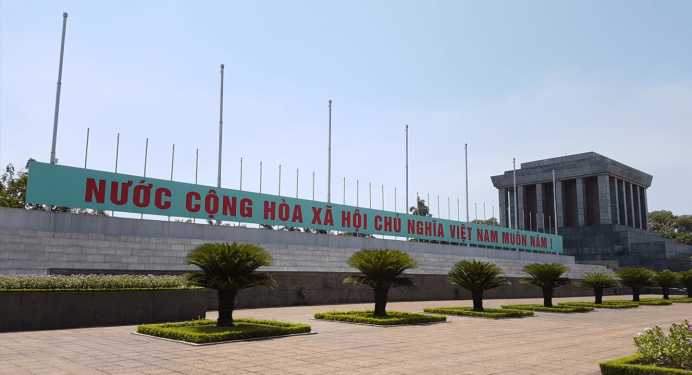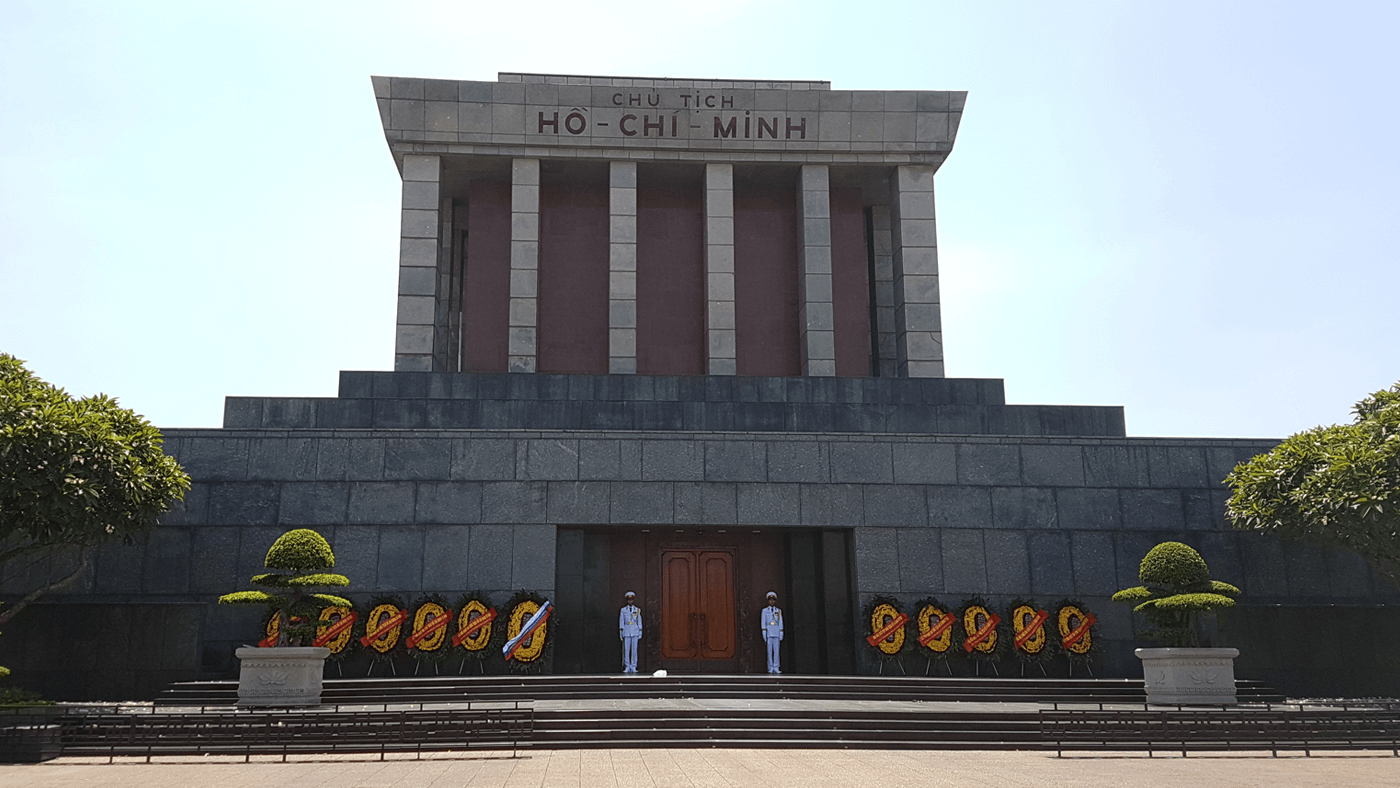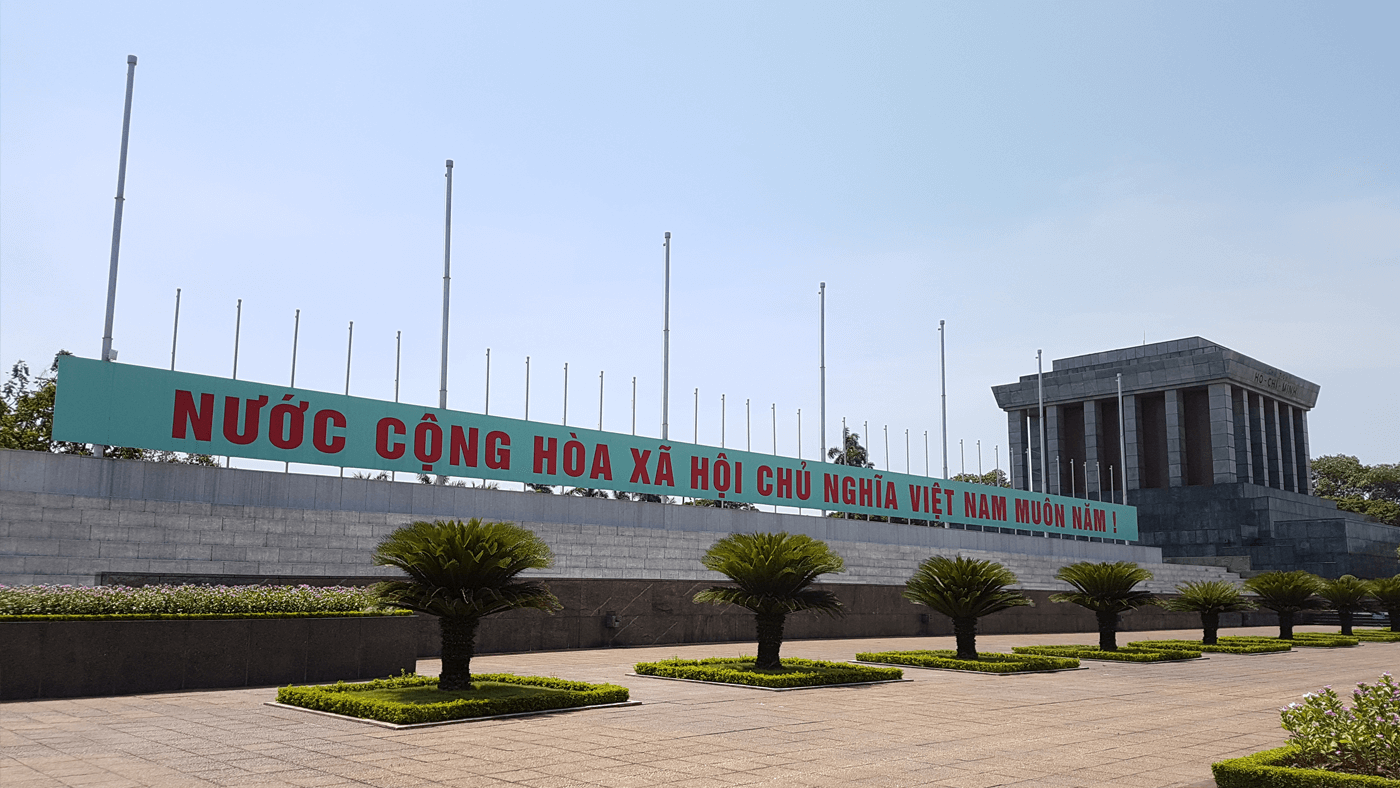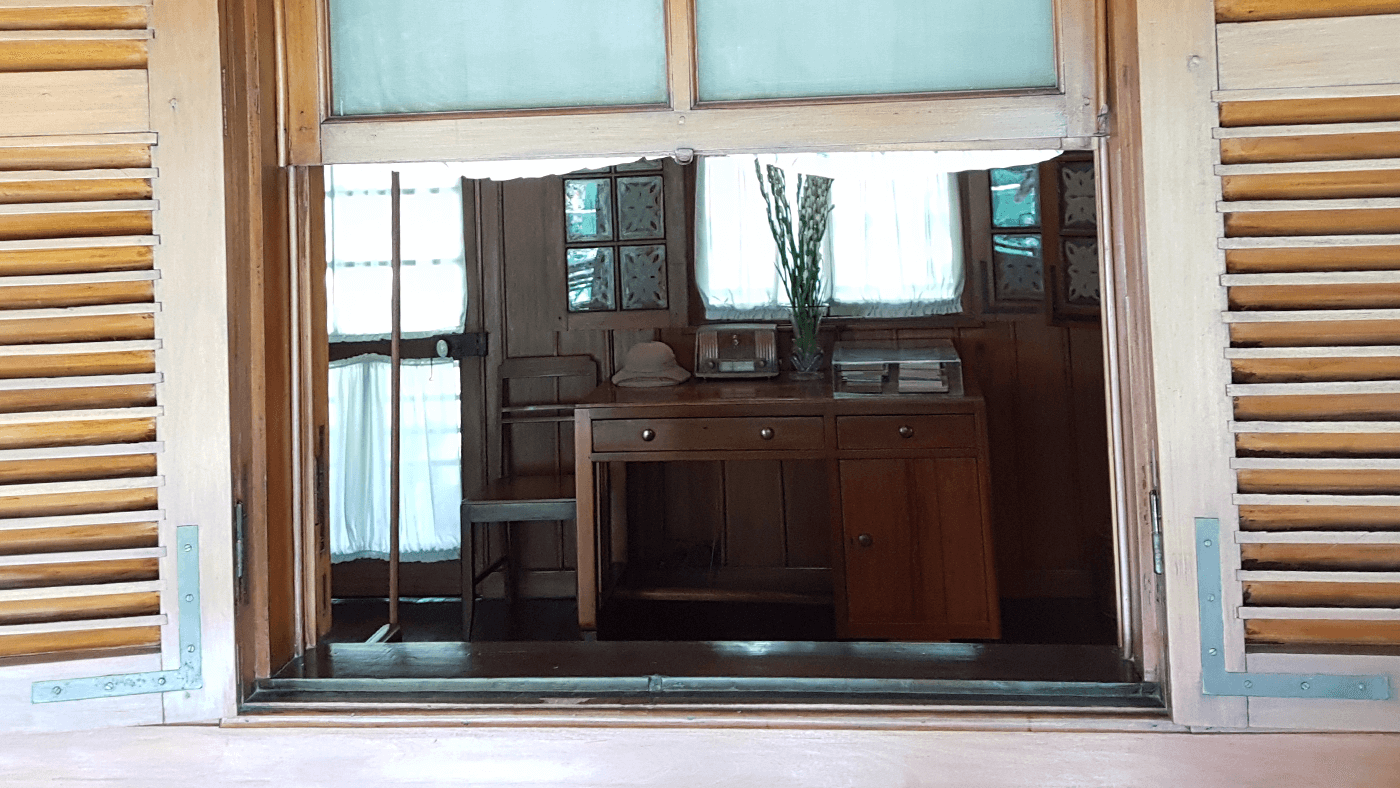
The political and historical heart of Vietnam
Ba Dinh Square and Ho Chi Minh’s Mausoleum
On 2nd September 1945, in what was originally the Ba Dinh flower garden (Hanoi, Vietnam), President Ho Chi Minh (known to his people as 'Uncle Ho') read the Declaration of Independence to a crowd of half a million Vietnamese people, giving birth to the Democratic Republic of Vietnam, free of French colonial rule.
All men are created equal. They are endowed by their Creator with certain inalienable rights among these are Life Liberty and the pursuit of Happiness
HO CHI MINH
Ba Dinh Square, as it is known today, is a shrine to Uncle Ho, modern Vietnam's founding father. Packed with places of interest you will find Ho Chi Minh's Mausoleum and museum, the Presidential Palace, Ho Chi Minh's Stilt house, and the One Pillar Pagoda - all within walking distance to each other. Nowadays the square is one of few unoccupied open spaces within Hanoi where the annual celebrations of Vietnam's National Day are held.
Ho Chi Minh’s Mausoleum
The most important monument of Vietnam, and the key landmark in the square, is Ho Chi Minh’s Mausoleum - his final resting place.

Ho Chi Minhs Mausoleum - The guards stand to attention on either side of the massive entrance
Contrary to Uncle Ho's desire for a simple cremation, the mausoleum was constructed from materials gathered from all over Vietnam between 1973 and 1975. The Mausoleum is open to the public and contains his embalmed body preserved in a glass case in the central hall, whereby visitors can visit and pay their respects for free.
Security is tight and you should dress with respect (no shorts, sleeveless shirts and miniskirts), and you may be requested to hand over your personal bags and belongings.

State of the Socialist Republic of Viet Nam forever
It's important to note that the mausoleum is usually closed from Sep to Nov while Ho Chi Minh's embalmed body is sent to Russia for yearly maintenance.
One Pillar Pagoda
One of the most famous Buddhist temples in Hanoi, the One Pillar Pagoda is unqiue, it's design having never been replicated in any city around the world - built of wood on a single pillar, designed to resember a lotus blossom - the buddhist symbol of purity - rising from the lotus pond below.
Not the original, the nearly 1000 year old Pagoda was destroyed by withdrawing French troops in 1954, this replica is situated in the gardens behind Ho Chi Minhs Mausoleum and is beautifully restored, resting on one concrete pillar instead of the original wooden one.

One Pillar Pagoda
The Pagoda is said to posess healing powers, and is visited by 'unfruitful' couples making offerings to the Godess of Mercy Quan Am.
Presidential Palace and Stilt House
The Presidential Palace was built in 1906 to house the French Governor-General of Indochina, designed based upon French-inspired European styles.

Presidential Palace
After Vietnam gained its independence Uncle Ho refused to live in the Palace stating that it was "too ornamental and elaborate" for a government official, and ordered a simpler wooden house on stilts to be built on the grounds, next to the carp pond and surrounded by gardens. This were to become where he would welcome world leaders during his days as leader.

House on Stilts
The Palace grounds are open and well worth a visit to see the beautiful and well preserved gardens and lake, Uncle Ho's car garage and three of his (Russian gifted) antique cars, as well as a bronze statue of Uncle Ho sitting in the garden. The Palace building, however, is closed to the public as it is still used to entertain Government officials.
A visit gives a good insight into how extravagantly the French rulers lived compared with Uncle Ho's humble lifestyle.
Alistair is a passionate traveler who has explored a diverse array of cultures and countries, having visited over 50 destinations across multiple continents.
Currently in: London, United Kingdom — @0_7734
